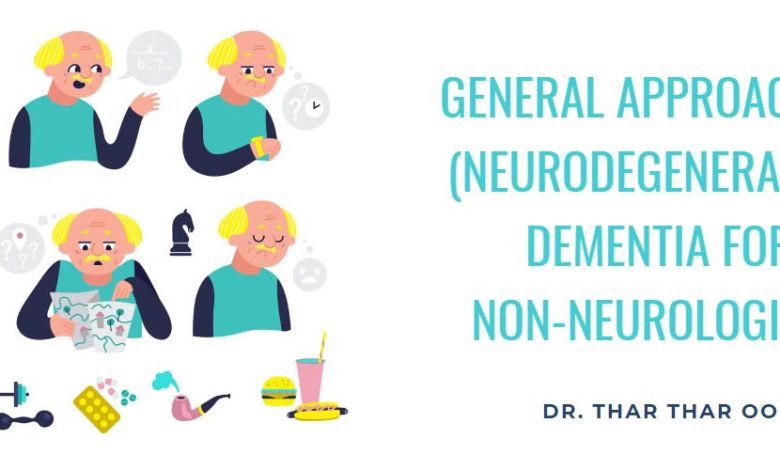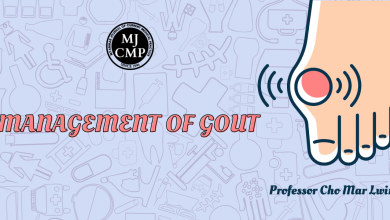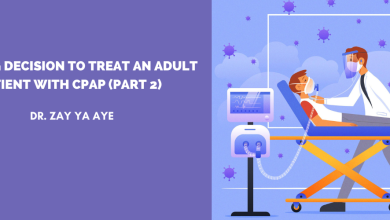General Approach to (Neurodegenerative) Dementia for Non-Neurologists

Dementia is a syndrome that can be defined generally as a progressive decline in cognitive function and/or behavior that impacts daily life functioning.
As the population is aging, the burdens of Alzheimer type dementia (ATD) and other dementias are considerable burden on the economy and society.
Timely diagnosis avoids the limbo of diagnostic uncertainty and pointless cycles of investigation.
The goal of the diagnostic process is to make a specific diagnosis, stage the disease, and identify any systemic illnesses, psychiatric conditions, or delirium that might be contributing.
Ruling out other disease processes supports the specific diagnosis. The earlier the diagnosis is made, the greater the benefit in managing the illness.
However, the early diagnosis of dementia is challenging and remains very reliant on clinical judgement.
1. Different cognitive domains1
Some physicians and patients and their families think that a memory problem is the only cognitive problems, which is NOT entirely correct.
In addition to learning and memory မှတ်နိုင်စွမ်းအားရှိပြီး မှတ်သားထားသည်များကို မှတ်မိနေခြင်း) problem (immediate recall, short term, long term, procedural memory) other equally important cognitive domains are:
- Language (difficulty with findings words, using correct words, ability to read and write and ability to comprehend written language)
- Executive function (Mnemonics: SOAP; Sequencing အချိန်နေရာ အလိုက် တဆင့်ပြီး တဆင့် လုပ်တတ်ခြင်း, organization လုပ်ဆောင်ရမည့် အလုပ်များကို စီစဉ်တကျ လုပ်ဆောင်ခြင်း, Abstraction အကြောင်းအရာ တစ်ခုခုကို နားလည်ပြီး စိတ်ကူးစိတ်သန်းရှိခြင်း၊ and planning လုပ်ဆောင်ရမည့် ကိစ္စများကို ကြိုတင်ကြံဆ အကွက်ချ စီစဉ်နိုင်ခြင်း။
- Visual-motor and spatial-motor function (အမြင်အာရုံ နှင့် အကွာအဝေး တည်နေရာများကို သိရှိနားလည်ခြင်း နှင့် အသုံးပြုတတ်ခြင်း)
- Complex attention (ခက်ခဲသော လုပ်ငန်းအလုပ်များကို တချိန်တည်းတွင် အာရုံကောင်းကောင်းနှင့် လုပ်ဆောင်နိုင်ခြင်း)
- Social cognition (လူမှုရေး အသိအမြင်၊ လူတစ်ယောက်၏ ပတ်ဝန်းကျင်တွင် မည်သို့ပြောဆို ပြုမူနေထိုင် ရမည်ကို သိရှိခြင်းနှင့် ထိန်းချုပ်နိုင်ခြင်း)
2. Time saving measure for cognitive examination in busy clinic1,2
Before starting cognitive test in clinic, patient must be alert, awake, aware, and not aphasic.
- Language (6 elements of exam, four of them by yourself and two elements require paper and pen)
1.1. Fluency (ability to produce spontaneous speech without difficulty or interruptions or hesitancy)
Pitfall: Fluency is actually the motor production of speech; if your patients have a severe dysarthric motor speech production problem- It is NOT a language problem).1.2. Comprehension (understanding what you are being told)1.3. Naming (by looking at an object and knowing what it is called)
1.4. Repetition (when hearing something and being able to repeat back)
1.5. Reading (need pen and paper)
1.6. Writing (need pen and paper)Pearls: always start with fluency and then comprehension of spoken language and if someone has difficulty in those areas, the rest of the language domain examination may not be accurate.
2. Excecutive function
This is the domain that least often tested at bedside or in clinic. It is a very common cognitive complaint, and very disabling.
Mnemonic: SOAP
2.1. Sequencing: the ability of combining things in a particular order, or discovering the order in which they are combined (အလုပ်တစ်ခုကိုအစီအစဉ် အတိုင်း တစ်ဆင့်ပြီး တစ်ဆင့် လုပ်ဆောင်နိုင်ခြင်း)
2.2. Organization: similar to sequencing but able to organize those tasks in an appropriate way to reach the execution (sequencing နှင့် တူပါသည်။ စနစ်တကျ အသင့်တော်ဆုံးနည်းအား ရွေးချယ်၍ ပြီးမြောက်အောင် ဆောင်ရွက်ခြင်း)
2.3. Abstraction: by hearing or reading something that is not rooted necessarily in the physical world and being able to understand and able to explain the meaning of it. (ပြောသော ကြားသော အကြောင်းအရာတခုခု ၏ ဆိုလိုရင်း အဓိပ္ပာယ်ကို နားလည်ခြင်း၊ ပြန်ပြောပြနိုင်ခြင်း)
2.4. Planning: able to plan a task
Pearls:
1. Best way to test all executive function is asking the patient to draw a face of a clock and put the minute arm and hour arm showing 10 minutes after 11

2. Other questions usually used:
Similarity between banana and orange? (fruits)
Similarity between a watch and a ruler? (measuring things in different way)
3. Memory
Four things to test in memory domain.
3.1 Give 3-5 unrelated words (ဥပမာ-ဆင်၊ရထား၊လယ်ကွင်း၊ ပတ္တမြား၊ရေဒီယို) and ask patient to repeat back 3 times.
(attention and registration)
3.2. Ask these words 10-15 minutes later (retrieval)
3.3 If someone has difficulty answering correctly or not remember exactly, cues (memory prompt) can be given (that is called encoding).
2.4. Perceptual motor/visual functions
Test mainly for motor praxia (unable to perform tasks or movements when asked, even though: The request or command is understood. They are willing to perform the task. The muscles needed to perform the task work properly. The task may have already been learned)
e.g., Easy bedside/clinic test: “how to comb your hair with your imagination”
Visual perception: ability to know colors, shape, recognition to faces, and understanding of where things are in space.
e.g., to pick the similar one from second like choices

Visual spatial orientation
e.g ဘယ်အဆောက်အဦးက ရှေ့မှာ ပိုကြသလဲ

2.5. Complex attention
the ability to control, shift, and divide attentional focus, allowing for the manipulation of information and execution of multiple steps to accomplish a goal.
Trail test

2.6. Social cognition
Just observe the patient during interview for social interaction and social appropriateness e.g., how patient is interacting with or his/her family, appropriate inhibition present or not, facial expression, emotionally able to control or not etc.
3. Basic principles of history taking of cognitive assessment in clinic (bedside)3,4
History is the most important aspect of successful dementia diagnosis.
- Obtaining a history from reliable informants who know the patient well is integral and interviewing them separately may encourage sharing of sensitive or embarrassing clues to the diagnosis.
- A minute or two spent putting the patient and family at ease is well invested.
- How well organized and detailed patients seem when describing their symptoms is informative, particularly if at odds with performance on formal cognitive tests.
- Interpretation of cognitive or behavioral changes depends on an appreciation of the patient’s sociocultural background, education, occupation, premorbid language skills, any pre-existing specific developmental or other deficits, and medical and psychiatric history (including medications).
- Cognitive concerns will most frequently be framed as a non-specific ‘memory’ problem: this is the most ubiquitous of several potential ‘pitfall’ symptoms that must be deconstructed.
- Domains of cognitive function and behavior that may not be volunteered should also be explored (as these helps define the cognitive profile), framing these as questions about functioning in daily life.
- Particularly in younger people, a detailed family history is essential (including parents’ diagnoses and age at death if relevant, and the ages of any siblings).
4. How about MMSE and MoCA test?5
Both the MMSE and the MoCA are routine cognitive screening tests rated on a 30-point scale. They are both brief.
The Mini-Mental State Exam (MMSE) introduced in 1975, tests cognitive function by examining orientation, immediate memory, short-term memory, word recall, language abilities, attention and calculation, and visuospatial ability. The MMSE takes about 10 minutes to complete.
Advantages of the MMSE include brevity and ease of administration. Disadvantages include the narrow scope; inability to detect subtle memory losses; and interpretation complexity as age, education, and cultural background affect scores.
The Montreal Cognitive Assessment (MoCA), created in 1996, is also assessing many of the same areas as the MMSE.
This screening targets several categories—
visuospatial/executive functions, naming, memory, attention, language, abstraction, delayed recall, orientation—each of which is independently scored and combined for a total possible score of 30.
Advantages of the MoCA include its sensitivity as a screening tool for mild cognitive impairment, Alzheimer’s disease, and dementia, as well as its ease of use. The disadvantage of the MoCA is the length of time required for administration. The MoCA takes approximately about 15 minutes to complete.
The MoCA can be used in patients with Parkinson’s disease, vascular dementia, traumatic brain injury, Huntington’s disease, and multiple sclerosis who have cognitive complaints.
Please see appendix A and B for Myanmar version of MMSE and MoCA.
5. Minimum diagnostic work-up needed in diagnosis of dementia4
5.1. Laboratory Studies
Laboratory tests for ruling out reversible causes of dementia, including vitamin B12 and thyroid impairments, a complete blood count (CBC), electrolyte panel, and creatinine, blood urea nitrogen/Urea (BUN/Urea), calcium, and glucose levels check for metabolic abnormalities. HIV, syphilis, and other infections should also be ruled out in appropriate settings.
5.2. Neuroimaging
Either non-contrast CT or MRI is recommended as part of the initial evaluation for dementia.
Typically, brain MRI is preferred over CT to evaluate for strokes, tumors, and other structural lesions that can produce cognitive changes.
In early stages of ATD, hippocampal atrophy is often seen, whereas occipital and frontal atrophy is more likely in dementia with Lewy bodies and frontal and anterior temporal atrophy is more likely in Frontotemporal lobe dementia (FTD). Persons with vascular dementia have significant microvascular changes.
When available, volumetric MRI can quantify the volume loss by comparison to same age and sex referents and measure atrophy longitudinally.
5.3. EEG
Not all cases of dementia are needed.
5.4. CSF analysis
If infection is the cause of dementia is suspected.
6. Some important type of Dementia and their salient clinical features4
6.1. Alzheimer’s type disease-Salient features
Older patients with episodic and topographical memory impairment that declines over time are most likely to have Alzheimer’s disease.
- Details of important events and conversations are not retained
- Questions become repetitive
- Often a loss of facility with route-finding and a history of becoming lost
- A signal ‘catastrophic’ episode (often, disorientation in unfamiliar surroundings, e.g., while on vacation) preceding more pervasive
- Deterioration
- Loss of own hobbies
- Loss of confidence or initiative, embarrassment, anxiety, and withdrawal from social activities
6.2. Lewy bodies dementia-Salient features
- An early predisposition to severe, prolonged delirium (for example, attending a minor infection or surgical procedure)
- Acting out of dream content (REM sleep behavior disorder)
- Misperceptions and hallucinations (usually predominantly visual) develop (may not be volunteered, need to ask direction)
- Initially, they may be brief transients glimpsed in the periphery but evolve into vivid, animate entities (commonly faces, people or animals) that emerge out of background features (such as foliage or a pile of clothes) in stereotyped fashion, particularly under low-light conditions
- Marked fluctuations in alertness, attention, and cognitive competence even within the course of a day (particularly deterioration later in the day)
- Features of associated Parkinsonism (such as hypomimia or gait changes) may be subtle initially
- Ask about autonomic symptoms (particularly urinary urgency, nocturia or unexplained collapses)
6.3. Vascular cognitive impairment-Salient features
The most common cognitive syndrome of cerebrovascular Disease (vascular cognitive impairment) is an insidious deterioration characterised by disorganization, loss of verve and initiative, irritability, mental rigidity, emotional lability, and other mood changes, and sometimes inappropriate or disinhibited social behavior.
Classic feature of the stepwise decline in function is NOT very common.
Vascular risk factors are frequent, but their absence does not exclude the diagnosis.
Remember: This is one of the few diagnoses in neurology where a compatible scan is sine qua non, over-diagnosis of incidental vascular changes is a significant pitfall, compounded by the frequent coexistence of cerebrovascular disease with primary neurodegenerative pathologies.
7. Some important potential ‘pitfall’ symptoms and signs requiring further clarification or interpretation in suspected dementia4
7.1. Ambiguous symptoms
A. ‘Poor memory’
Often used as a shorthand for ‘cognitive problem’.
Does it mean (1) episodic memory (events, routes, conversations, etc.), (2) semantic memory (words and concepts) or (3) another domain of cognition?
If the issue is with memory, is it with encoding information (attention), retaining new information (anterograde memory) or retrieving old information?
B. ‘Getting lost’
Is this truly difficulty completing a route without assistance (topographical disorientation) or wandering (but ultimately getting there)?
A useful question can be ‘how would you make your way home from here if you had to do it alone’?
C. ‘Word-finding difficulty’
Often known as ‘language problem’
Is it difficulty retrieving the name (very common), loss of vocabulary or difficulty pronouncing the word (uncommon)?
D. ‘Lost interest in hobbies’
Is this a general loss of concentration or initiative, anhedonia, difficulty following the more specific tasks and projects?
E. ‘Doesn’t recognize people’
Is this inability to recall their name (personal anomia, very common) or failure to recognize faces or voices, ‘blanking’ familiar people? (true prosopagnosia or phonagnosia, uncommon)
F. ‘More anxious/irritable’
Might be psychiatric (e.g., atypical depression) but also an early feature of many ‘organic’ dementias
7.2. Counterintuitive symptoms
A. ‘Asks meaning of words’
Loss of ability to understand words in a familiar language
B. ‘Can play golf (etc.) but can’t find ball on ground’
Static visual localization more impaired than motion vision (or occasionally the reverse)
C. ‘Says spouse is impostor’
Misidentification delusion (Capgras, etc.), can also be for location (e.g., asks to go ‘home’ in own house)
D. ‘Much nastier/nicer now’
Altered interpersonal awareness and conduct
7.3 Potentially misleading symptoms
A. It all started after that… (accident/operation, etc.)’
Usually, this is attribution bias; occasionally cases where severe psychological trauma did seem to provoke catastrophic cognitive decline in a previously asymptomatic person
B. ‘Distant memories are fine’
Usually they are not, but highly over learnt or emotional memories tend to become the focus of cherished anecdote
C. ‘Poor short-term memory’
The immediate span of working memory (up to ~30 seconds)
D. ‘Thinks people are stealing from them’
Usually not a harbinger of psychosis but a specific delusion of theft (or infidelity)
8. Reversible causes of dementia6,7
Truly reversible causes of dementia account for a small proportion of cases in outpatient clinics.
Even when diagnosis and treatment do not result in complete resolution of symptoms, the potential to modify disease progression and improve quality of life for patients and family members justifies screening for reversible causes of dementia.
“Red Flags” that suggest a reversible dementia
Red Flag 1: Rapid Unexplained Decline
Patients with rapidly progressive dementia require an expedited assessment, with the goal of rapidly identifying and remedying reversible causes of and contributors to dementia.
Core testing should include screening serum studies, neuroimaging (favoring MRI), routine CSF analyses, and EEG.
Findings on history and examination and the results of initial testing may justify further testing, 8 or repeat testing.
Red Flag 2: Younger Than Expected Age at Symptom Onset
Younger than expected age at symptomatic onset is a well-recognized marker of secondary causes of dementia, necessitating careful evaluation and screening for reversible causes.
e.g., CJD (Creutzfeldt-Jakob disease), autoimmune encephalitis
Red Flag 3: Prominent Fluctuations
Prominent fluctuations can be seen as a manifestation of reversible dementias.
Toxic-metabolic disturbances, medications, untreated sleep disorders (including obstructive sleep apnea), and psychiatric illnesses may all present with prominent fluctuations in cognition.
Transient epileptic amnesia is associated with acute and transient memory disruptions lasting minutes (typically less than an hour) that are often accompanied by fluctuations in attention.
Anticholinergic medications may be especially problematic in patients with Alzheimer disease.
The life-threatening effects of thiamine should not be missed.
Red Flag 4: High-risk Exposures
High-risk medications (including herbals and traditional medicines), drugs, and toxins is imperative when making a new diagnosis of dementia.
Narcotic, benzodiazepine, and anticholinergic medications are common precipitants of cognitive decline.
Red Flag 5: High-risk Behaviors (Past and Present)
Syphilis testing should be considered in patients with dementia from in those with a past or present history of high-risk behaviors including individuals with multiple sexual partners, men who have sex with men, IV drug users, and persons with other sexually transmitted infections.
An immunocompromised state, whether inherited or acquired, represents an additional high-risk “exposure,” increasing the chances of reactivation of latent infection in previously exposed patients.
Red Flag 6: Unexplained/Unanticipated Findings on the Neurologic Examination
The discovery of abnormal neurologic findings—whether subtle or pronounced—warrants consideration of atypical causes of dementia, including reversible causes.
Detection of features of the triad of progressive memory loss, gait apraxia, and urinary incontinence warrants screening for causes of normal pressure hydrocephalus and high-pressure hydrocephalus.
Pearls: Sleep dysfunction, attributable to obstructive sleep apnea or other causes, is increasingly identified as a contributor to cognitive impairment.
9. Rapidly progressive dementia (RPD)8,9
RPD is a large group of heterogeneous cognitive disorders with fast progression leading to the clinical syndrome of dementia, within a relatively brief time period, which is commonly considered to be less than either 1 or 2 years.
9.1. RPD and contributing factors
Fig 1. RPD disease entities and contributing factors

9.2. General overview of different RPD time course
Fig 2. Probable rapidly progressive dementia etiologies in relation to time from onset to dementia

The above chart signifies the likelihood of particular disease categories in light of the rapidity of cognitive decline. (rough overview only)
The time of symptom progression (indicated above disease categories) ranges from immediate onset of relevant cognitive dysfunction (left) to 2 years from onset of first symptoms to presence of dementia (right).
Higher color intensity indicates a typical time frame for each disease category.
- Patients with Creutzfeldt–Jakob disease usually develop a full dementia syndrome within a time span of a few weeks or a few months after onset.
- In other rapidly progressive neurodegenerative dementias, this process usually takes from several months up to 2 years.
- CSN inflammatory diseases and metabolic encephalopathies are likely to show immediate or subacute onset with very rapid disease progression,
- Vascular encephalopathies are extremely heterogeneous and can show immediate onset of dementia (after stroke, for example), rapid disease progression (vasculitis), or moderate or stepwise progression (classic vascular dementia).
9.3. RPD and its mimics
The normal cognitive decline associated with aging consists primarily of mild changes in memory and rate of information processing.
Features that distinguish normal aging from dementia include that deficits are generally not very progressive and usually do not affect daily function.
Fig 3. Differential diagnosis of memory loss

Fig 4. Delirium vs. Dementia vs. Depression

References
- Singh, H, How to Evaluate Six Neurocognitive Domains in Dementia? Psychiatry Education Forum Academy Lecture Series. July 24, 2021
- Zhao, C, Zhou, S, Moeller, J., Cognitive Complaints. Clerkship Series #4, March 5, 2021
- Koliatsos VE. A Clinical Approach to Cognitive Impairment. Focus (Am Psychiatr Publ). 2016 Oct;14(4):437-447.
- Johnson JCS, McWhirter L, Hardy CJD, et al. Suspecting dementia: canaries, chameleons and zebras. Practical Neurology 2021;21:300-312.
- Bak TH, Mioshi EA cognitive bedside assessment beyond the MMSE: Practical Neurology 2007;7:245-249.
- Day GS. Reversible Dementias. Continuum (Minneap Minn). 2019 Feb;25(1):234-253
- Clarfield AM. The reversible dementias: do they reverse? Ann Intern Med 1988; 109:476.
- Hermann, P., Zerr, I. Rapidly progressive dementias — aetiologies, diagnosis and management.Nat Rev Neurol 18, 363–376 (2022).
- Knopman DS, Boeve BF, Petersen RC. Essentials of theproper diagnoses of mild cognitive impairment, dementia, and major subtypes of dementia Mayo Clin Proc 2003; 78:1290.
Appendix A. Mini Mental State Examination in Myanmar
(Credit: Ar Yu International Hospital, Neurology Department)


Appendix B. Montreal Cognitive Assessment (MoCA) Myanmar Version
(Credit: Ar Yu International Hospital, Neurology Department)


Author Information
Thar Thar Oo
M.B; B.S, M.D (USA), MPH, FAAN
Diplomate, American Board of Psychiatry and Neurology
Subspeciality diplomate in Vascular Neurology,
Headache and Facial Pain and Neuro-Toxicology
Senior Consultant Neurologist





